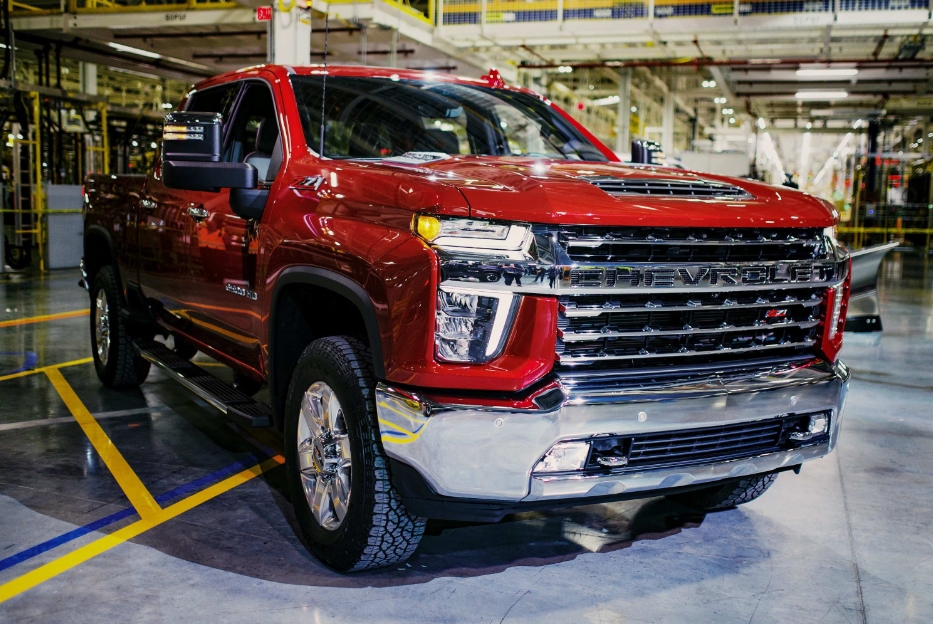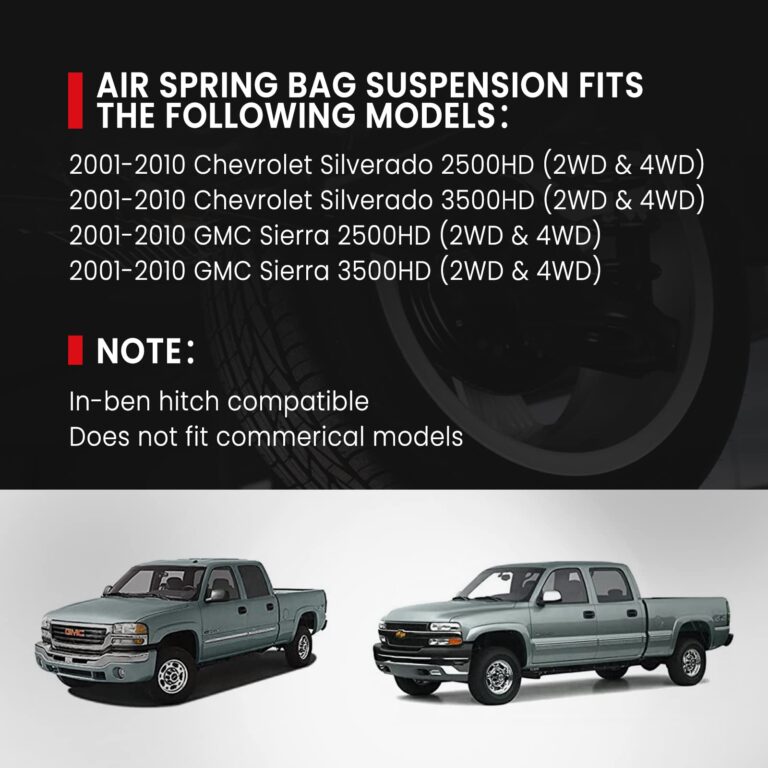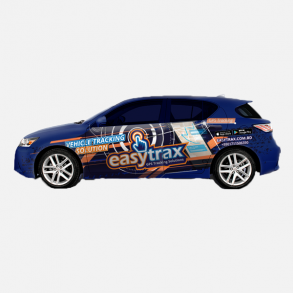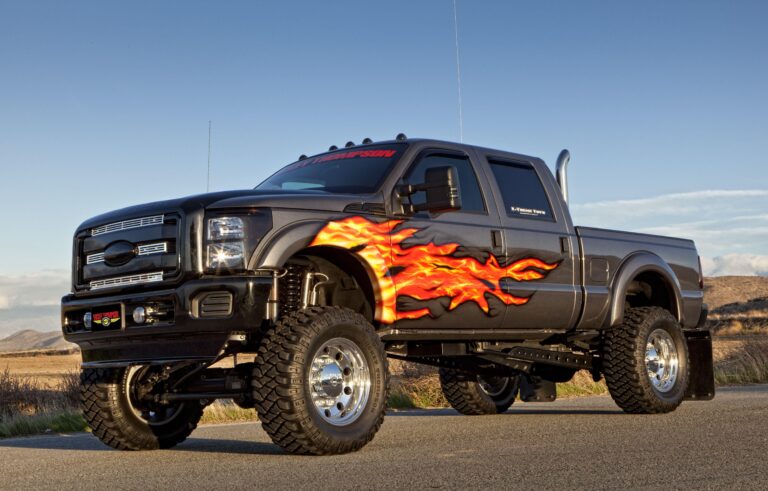Drw Trucks For Sale Near Me: Your Ultimate Guide to Finding the Perfect Heavy-Duty Hauler
Drw Trucks For Sale Near Me: Your Ultimate Guide to Finding the Perfect Heavy-Duty Hauler cars.truckstrend.com
In the world of serious towing and heavy hauling, a single rear wheel (SRW) truck often falls short. When you need unparalleled stability, immense payload capacity, and the confidence to move mountains (or at least very heavy trailers), a Dual Rear Wheel (DRW) truck, often affectionately called a "dually," is the undisputed champion. If you’re searching for "DRW trucks for sale near me," you’re likely entering a realm where power, durability, and specialized capability are paramount. This comprehensive guide will walk you through everything you need to know about these formidable vehicles, from understanding their core benefits to navigating the market and making an informed purchase.
What is a DRW Truck and Why Do You Need One?
Drw Trucks For Sale Near Me: Your Ultimate Guide to Finding the Perfect Heavy-Duty Hauler
A DRW truck, or dually, is distinguished by having two wheels on each side of its rear axle, totaling four wheels at the back and six wheels overall. This design significantly increases the truck’s footprint and, more importantly, its Gross Vehicle Weight Rating (GVWR) and Gross Combined Weight Rating (GCWR).
Key Advantages of a DRW Truck:
- Superior Towing and Payload Capacity: This is the primary reason people opt for a dually. The extra tires distribute weight more effectively, allowing the truck to carry and pull significantly heavier loads than an SRW counterpart. This is crucial for large fifth-wheel RVs, gooseneck trailers carrying heavy equipment, or commercial applications.
- Enhanced Stability: With a wider stance and more rubber on the road, DRW trucks offer exceptional stability, especially when towing heavy loads at highway speeds or in crosswinds. This reduces sway and provides a much safer and more comfortable towing experience.
- Improved Tire Durability and Heat Dissipation: Spreading the load across four rear tires reduces individual tire stress, leading to better heat management and potentially longer tire life, even under extreme conditions. If one tire fails, the others can still support the load, offering a safety net.
- Better Braking Performance (with heavy loads): While not inherently having more powerful brakes, the increased traction and stability provided by the dual wheels contribute to more controlled and effective braking when heavily loaded.
- Resale Value: Due to their specialized capabilities, well-maintained DRW trucks often hold their value well, especially in regions with a high demand for heavy-duty hauling.

Who Needs a DRW Truck?
- RV Enthusiasts: Especially those with large, heavy fifth-wheel or travel trailers.
- Heavy Equipment Haulers: Contractors, farmers, and landscapers transporting excavators, tractors, or large machinery.
- Commercial Businesses: Anyone needing to haul commercial trailers, large cargo, or operate a heavy service body.
- Boat Owners: Those with exceptionally large, heavy boats that exceed SRW capabilities.
- Anyone Prioritizing Safety and Stability: Even if your load is just within SRW limits, the added stability of a dually can be a significant comfort and safety upgrade.

Key Considerations When Buying a DRW Truck
Purchasing a DRW truck is a significant investment, and careful consideration is paramount. Here’s what to keep in mind:
-
Define Your Primary Purpose: What will the truck primarily be used for? This will dictate the required towing/payload capacity, engine type, and features. Don’t overbuy if you don’t need extreme capabilities, but don’t underbuy if you plan to push its limits.
-
Understand Towing and Payload Ratings:
- GVWR (Gross Vehicle Weight Rating): Maximum permissible weight of the fully loaded truck (including passengers, cargo, and tongue weight of a trailer).
- GCWR (Gross Combined Weight Rating): Maximum permissible weight of the truck and its fully loaded trailer combined.
- Payload Capacity: How much weight the truck can carry in its bed and cab (including passengers).
- Max Towing Capacity: The maximum weight a truck can tow.
- Always ensure the truck’s ratings exceed your heaviest anticipated load for safety and performance.
-
Engine Type: Diesel vs. Gasoline:
- Diesel: Generally preferred for DRW applications due to superior torque for heavy hauling, better fuel efficiency under load, and longer lifespan. However, diesel trucks have higher upfront costs, more expensive maintenance, and potentially higher fuel prices.
- Gasoline: Lower upfront cost, simpler maintenance, and cheaper fuel. Modern gas engines in heavy-duty trucks are powerful, but they typically don’t match the longevity or fuel economy of a diesel when constantly pulling heavy loads.
-
Transmission: Modern DRW trucks almost exclusively come with heavy-duty automatic transmissions designed to handle immense torque and weight. Manual transmissions are rare but still available in some older models.
-
Cab Style & Bed Length:
- Cab Styles: Regular Cab (single row), Extended Cab (small rear seats), Crew Cab (full-size rear seats). Most heavy-duty buyers opt for Crew Cabs for passenger comfort.
- Bed Length: DRW trucks typically come with an 8-foot (long) bed to accommodate fifth-wheel hitches and maximize cargo space.
-
Drivetrain: 2WD vs. 4WD:
- 2WD (Two-Wheel Drive): Lighter, less complex, slightly better fuel economy, lower cost. Ideal if you’re primarily on paved roads.
- 4WD (Four-Wheel Drive): Essential for off-road towing, navigating slippery boat ramps, snowy conditions, or muddy job sites. Adds weight, complexity, and cost.
-
Condition (for Used Trucks):
- Rust: Inspect the frame, cab corners, wheel wells, and bed for rust, especially in regions that use road salt.
- Maintenance Records: Ask for detailed service history. A well-maintained truck is crucial for longevity.
- Tires: Check the condition and wear pattern of all six tires. Replacing six tires can be expensive.
- Fifth-Wheel/Gooseneck Hitch: If already installed, check its condition and ensure it meets your needs.
- Professional Pre-Purchase Inspection: Highly recommended for any used vehicle, especially a heavy-duty truck.
-
Budget: Factor in not just the purchase price, but also insurance (can be higher for DRWs), fuel costs, maintenance (especially for diesels), and potential upgrades (e.g., air bags, upgraded suspension).
Finding DRW Trucks For Sale Near Me: A Step-by-Step Guide
The quest for your ideal dually begins with knowing where to look and how to refine your search.
-
Online Marketplaces (Your First Stop):
- Dedicated Car Sales Sites: Autotrader, Cars.com, Kelley Blue Book (KBB), Edmunds are excellent for filtering by make, model, year, price, and specific features like "dually" or "DRW."
- Manufacturer Certified Pre-Owned (CPO) Programs: Check websites for Ford, Ram, Chevrolet, and GMC for CPO DRW trucks, which often come with warranties and rigorous inspections.
- Local Classifieds: Craigslist and Facebook Marketplace can yield hidden gems, but require more caution regarding scams and vehicle condition.
- Specialized Truck Sites: Some sites cater specifically to heavy-duty and commercial vehicles.
-
Dealerships:
- New Car Dealerships (Ford, Ram, Chevy, GMC): They will have new DRW models and often a good selection of late-model used trade-ins. They offer financing, warranties, and service departments.
- Used Truck Dealerships: Some dealerships specialize solely in used trucks, often having a wider variety of makes and models, including older or higher-mileage options.
- Commercial Vehicle Dealerships: These dealers often have a focus on work trucks and may have a better understanding of heavy-duty applications.
-
Local Classifieds & Auctions:
- Local Newspapers/Publications: Sometimes private sellers prefer traditional methods.
- Government/Fleet Auctions: Municipalities, utility companies, and other large organizations frequently auction off well-maintained fleet vehicles, including DRW trucks.
- Commercial/Heavy Equipment Auctions: These are often held in larger cities and can be a source for specialized trucks.
-
Networking:
- Word of Mouth: Let friends, family, and colleagues know you’re looking.
- Online Forums & Communities: RV forums, trucking forums, and heavy-duty truck enthusiast groups can be great places to find private sales or get recommendations.
Refining Your Search:
When using online platforms, leverage filters aggressively:
- Make & Model: Ford F-350/F-450/F-550, Ram 3500/4500/5500, Chevrolet Silverado 3500HD, GMC Sierra 3500HD.
- Year & Mileage: Balance age/mileage with budget and expected lifespan.
- Price Range: Set a realistic budget.
- Features: Look for specific options like integrated brake controllers, fifth-wheel prep packages, exhaust brakes, and infotainment systems.
- Location/Radius: Start broad and narrow down as you find promising leads.
Tips for Inspecting and Test Driving a DRW Truck
Once you’ve found a potential candidate, a thorough inspection and test drive are crucial.
-
Exterior Inspection:
- Frame: Look for cracks, welds, or excessive rust. This is the backbone of the truck.
- Body Panels: Check for consistent gaps, signs of accident repair (paint mismatches, wavy panels), or severe dents/scratches.
- Tires: Examine all six tires for even wear, sufficient tread depth, and any signs of damage (cracks, bulges). Uneven wear can indicate alignment issues or suspension problems.
- Suspension: Look for sagging, broken springs, or leaking shocks.
- Lights & Electrical: Test all lights, turn signals, and trailer wiring connections.
- Hitch: If a fifth-wheel or gooseneck hitch is installed, check its condition, mounting, and compatibility with your needs.
-
Interior Inspection:
- Wear and Tear: Check seats, steering wheel, and pedals for excessive wear that doesn’t match the odometer.
- Electronics: Test all power windows, locks, mirrors, radio, navigation, climate control, and any other electronic features.
- Warning Lights: Ensure no check engine light, ABS light, or airbag light is illuminated.
-
Engine Bay:
- Fluid Leaks: Look for oil, coolant, or transmission fluid leaks.
- Belts and Hoses: Check for cracks, fraying, or bulging.
- Battery: Look for corrosion on terminals.
- Overall Cleanliness: A very clean engine bay can hide issues, but a well-maintained one usually looks tidy.
-
Underneath the Truck:
- Driveline: Check driveshafts for dents or damage, and U-joints for play.
- Exhaust System: Look for rust or leaks.
- Differential: Check for leaks around the differential cover.
-
The Test Drive:
- Cold Start: Listen for unusual noises during startup.
- Acceleration: Check for smooth power delivery and proper transmission shifts (no slipping, harsh shifts, or delays).
- Braking: Test the brakes at various speeds. Listen for grinding, squealing, or pulsation. Ensure the truck stops straight.
- Steering: Check for excessive play, pulling to one side, or unusual noises during turns.
- Suspension: Drive over bumps and uneven surfaces to assess ride quality and listen for clunks or rattles.
- Listen for Unusual Noises: Pay attention to any strange sounds from the engine, transmission, differentials, or suspension.
- If Possible, Test with a Load: If you have a trailer or can simulate a load, this will give you the most accurate feel for the truck’s performance.
-
Professional Pre-Purchase Inspection: This is arguably the most crucial step, especially for a used DRW truck. A qualified mechanic (preferably one specializing in heavy-duty diesel trucks if applicable) can identify hidden issues that you might miss, saving you significant money and headaches down the road.
Common Challenges and Solutions
While DRW trucks are incredibly capable, they do come with certain characteristics that buyers should be aware of:
- Fuel Economy: DRW trucks are heavy and powerful, and while diesels are more efficient under load, overall fuel economy will be lower than smaller vehicles.
- Solution: Proper maintenance, keeping tires correctly inflated, and mindful driving habits (avoiding aggressive acceleration/braking) can help maximize efficiency.
- Maneuverability and Parking: The wider rear stance can make navigating tight parking lots, drive-thrus, and narrow streets challenging.
- Solution: Practice, utilize parking sensors, rearview cameras, and consider 360-degree camera systems available on newer models. Park further away if needed.
- Tire Costs: Replacing six heavy-duty tires can be a significant expense.
- Solution: Regularly check tire pressure, rotate tires as recommended, and shop around for deals on tire replacements.
- Insurance Costs: Insurance premiums for heavy-duty trucks can be higher due to their value and potential for greater damage in an accident.
- Solution: Shop around for insurance quotes from multiple providers, inquire about discounts, and consider bundling policies.
- Finding the "Right" One: Due to their specialized nature, the inventory of DRW trucks can be smaller than SRW trucks.
- Solution: Be patient, be willing to expand your search radius, and act quickly when a suitable truck appears.
Price Table: Representative DRW Truck Costs (Estimated Ranges)
It’s important to note that prices for DRW trucks vary significantly based on make, model, year, mileage, condition, engine type, transmission, features, and geographical location. This table provides a general estimated range to help you budget.
| Category | Typical Year Range | Mileage Range (Approx.) | Estimated Price Range (USD) | Key Factors Influencing Price |
|---|---|---|---|---|
| Older Used DRW | 2005-2015 | 150,000 – 300,000+ | $15,000 – $35,000 | High mileage, older technology, potential for more wear & tear, rust. |
| Mid-Range Used DRW | 2016-2020 | 75,000 – 150,000 | $35,000 – $55,000 | Good balance of features, life remaining, and value. |
| Newer Used DRW | 2021-Present | 10,000 – 75,000 | $55,000 – $75,000+ | Modern features, lower mileage, often under warranty, CPO options. |
| New DRW (Base Model) | Current Year | 0 – 100 | $60,000 – $80,000 | Entry-level trims, often gas engine, fewer luxury features. |
| New DRW (Mid-Trim) | Current Year | 0 – 100 | $80,000 – $95,000 | Popular trims, often diesel engine, more comfort/tech. |
| New DRW (High-Trim) | Current Year | 0 – 100 | $95,000 – $110,000+ | Luxury trims (e.g., Ford Platinum, Ram Limited, Denali HD), all options. |
Note: These are rough estimates. Prices can be lower for private sales or higher for highly sought-after configurations or specific markets. Always research current market values for specific makes/models in your area.
Frequently Asked Questions (FAQ)
Q1: What does DRW stand for?
A1: DRW stands for Dual Rear Wheel, indicating that the truck has two wheels on each side of its rear axle.
Q2: Is a DRW truck overkill if I only tow occasionally?
A2: It depends on the weight of what you’re towing. If your occasional towing involves heavy loads (e.g., large RVs, heavy equipment), a DRW truck is ideal for safety and stability. For lighter, infrequent towing, an SRW truck might suffice.
Q3: Do DRW trucks get significantly worse gas mileage than SRW trucks?
A3: Generally, yes. DRW trucks are heavier and have more rolling resistance due to the extra tires. While diesels are more fuel-efficient under load, expect lower MPG compared to an SRW truck, especially when unladen.
Q4: Are DRW trucks harder to drive or park?
A4: Their wider stance makes them less maneuverable in tight spaces and parking lots. However, with practice, drivers adapt. Parking sensors and cameras on newer models significantly help.
Q5: Can I convert an SRW truck to a DRW truck to increase its capacity?
A5: While aftermarket conversion kits exist, legally and safely increasing a truck’s Gross Vehicle Weight Rating (GVWR) or Gross Combined Weight Rating (GCWR) by simply adding dual wheels is generally not possible or recommended. The frame, axles, suspension, and braking system of an SRW truck are not designed for DRW capacities. Always buy a truck that was manufactured as a DRW if you need that capability.
Q6: What’s the best DRW truck brand (Ford, Ram, Chevy, GMC)?
A6: There isn’t a single "best" brand; it largely comes down to personal preference, specific features, available powertrains, and budget. All major manufacturers produce highly capable DRW trucks. It’s best to test drive models from each brand to see which one fits your needs and comfort best.
Q7: How often should I rotate DRW truck tires?
A7: Consult your truck’s owner’s manual, but generally, DRW tires should be rotated every 5,000 to 10,000 miles to ensure even wear and maximize tire life. The rotation pattern for dual wheels is specific.
Conclusion
Finding the right "DRW trucks for sale near me" means embarking on a journey toward unparalleled towing and hauling capability. These robust machines are purpose-built for the most demanding tasks, offering superior stability, immense capacities, and the peace of mind that comes with their heavy-duty design. By understanding your specific needs, diligently researching the market, thoroughly inspecting potential candidates, and conducting a comprehensive test drive, you can confidently acquire a DRW truck that will serve as a reliable workhorse for years to come. With the right dually, no load will be too heavy, and no journey too challenging.





